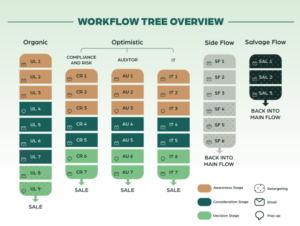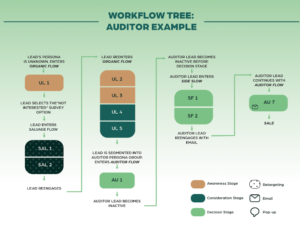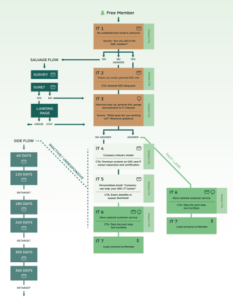The Rhetoric Behind Email Automation
Let’s preface this article by clarifying a foundational stance here: so long as we understand persuasion to be a form of argument, it could be said that marketing is a form of persuasion in and of itself, and it relies on the marketers ability to argue the value of their product or service to their client. That said, we can continue with today’s not-so-heavy-handed lesson plan: building successful email marketing automation campaigns.
The Basics
Classic thinking teaches us that there are three main principles behind the structure and success of argument. Boiled down to more approachable terms, these facets look like this:
- Credibility (ethos) – An appeal to ethics. The more you understand someone’s character or credibility, the genuine interest behind their argument, the more likely you are to hear and believe their message. For example: “I’ve been plumbing for 40 years and I know my way around most any leak!”
- Common Sense (logos) – An appeal to logic. The more reasonable and data-driven your argument, the more likely your audience will accept your opinion. For example: “The metrics clearly indicates that emails with sentence case subject lines have a significantly higher open rate.”
- Empathy (pathos) – An appeal to emotion. Eliciting an emotional response in an audience makes them more likely to hear, understand, and accept your message. For Example: “My plumbing business has helped me to raise three beautiful children and pay for their college educations”
Using these rhetorical mechanisms in email marketing is not as daunting as it may seem. It boils down to a few key points:
Keep it relevant, market with logic, and write with enthusiasm.
Keep it Relevant
We’ve discussed this on the blog before, but much of digital marketing revolves around providing your leads with value. That means the right content at the right time, and interesting or educating subject matter.
“Much of digital marketing revolves around providing your leads with value”
Collect your contacts, and then — segment. Counter-intuitive to the “cast a wide enough net” mentality is the inbound philosophy about giving your customers exactly what they need. Inherently, you probably know what people want to see and don’t want to see in their inbox. The hard part comes when you need to balance the ideal with the very real information, promotion, or sale that you set out to convey in your emails. How do we do that?
We give equivalent value for our ask. Provide the lead with information that satisfies their curiosity, delivers the message, and only asks for reciprocal return.
Segmentation means splitting your contact list into various groups depending on web behavior (tracked through automation platforms like InfusionSoft and HubSpot or by form field data collected through web forms. On a base level, that segmentation might take shape by separating a large contact list into email “chains” — like this:

Write with Understanding
Many successful small business owners today who operate successful businesses will tell you that their success lies in an understanding of their audience. They knew their niche and how to exploit it. The authors still touting their success 15 years down the line tell you a different story — that their success was founded on the enthusiasm in development, because of the intricacies of new characters, the complexity of plot points. Their work stands the test of time because it was created with foresight and tenacity.
The same can be said about email marketing. It is undoubtedly crucial to understand who you are writing for, and what the intention of your content is, but your copy will not carry weight if it cannot provide value, challenge the reader, or create an enjoyable buyer experience.
In short: keep it simple, keep it vibrant, and keep expectations low. Sometimes the content you write is perfect for your persona, but not perfect for their particular place in their buyer journey. Consideration of this fact during content development will save you a headache later when comparing click through rates to conversion rates.

Market with Logic
You’re off to a great start, your contacts are sorted into lists, your campaign content written to the exact psychographic you’re looking for. Now we can launch the campaign, right?
Not necessarily. Sure, a persona-segmented email campaign will increase your conversion rates, and ensure a boost in your quarterly metrics, but what about those situations that so many small business owners find themselves in? The “I’m all in on this one” campaign that needs to land? That calls for an entirely new level of sophistication. It’s at this point we start getting into branch logic.
When building out an email workflow, persona segmentation will give you great starting blocks for who you are talking to.
Cleverly-written content will cover the what they are looking for — but what about the when?
Take this situation into consideration: You’ve segmented out a successful entrepreneur from your contacts as a key persona, and written content to suit their needs. Are they ready to buy now? Do they need more information? Do they even know how to drive manual transmission? As you can see, you won’t necessarily know how ready your personas is to invest in your brand new line of sports cars until you gather more data.
This is where branch logic comes in. Carrying on with our example, branch logic would allow us to serve the perfect bit of email content to our entrepreneur after a few simple workflow interactions. Depending on their interaction with the email content, they could continue with the straightforward content path, or move on to a more appropriately-written content piece. Branch logic workflows look something like this:

Email automation, when used properly, can be an extremely effective tool for marketing to your customers. At Mountain Mojo Group, we believe that email campaigns utilize branch logic and the workflow process we’ve outlined above. The content of your email campaigns, in order to be truly successful, should be:
- Credible
- Understand in a simplistic manner
- Invoke to an emotion
- Be relevant to what the customer expects to read
Good luck and happy emailing!
Mountain Mojo Group is located in Flagstaff, Williams, the White Mountains, and Page, Arizona and provides top-quality marketing solutions and design! Our team works with small businesses all across the state of Arizona, providing a variety of marketing and design services including, social media management, photography, videography, strategy, web design, graphic design, SEO, and paid search engine marketing. Our team of creatives is ready to tackle your next marketing project. Contact our team today at (928) 440-5301 or stop by one of our offices located throughout northern Arizona.

